Disney comics are comic books and comic strips featuring characters created by the Walt Disney Company, including Mickey Mouse, Donald Duck and Scrooge McDuck.
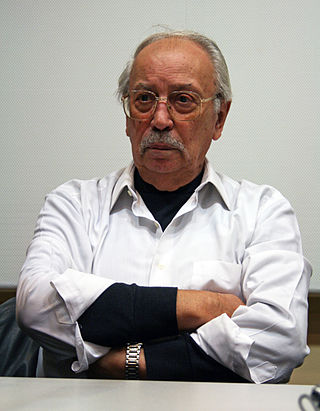
Enrique Badía Romero was a Spanish comics artist, best known to English-speaking audiences for his work on Modesty Blaise. He was also the co-creator of the post-apocalyptic science fiction strip Axa, as well as a substantial body of work in his native Spain.
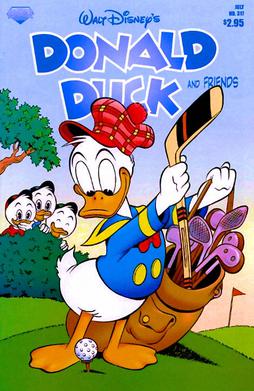
Donald Duck, also known as Donald Duck and Friends, is an American Disney comic book series starring the character Donald Duck and published by various publishers from October 1942 to June 2017. As with many early Disney comics titles, Donald Duck began as individual issues of Dell Comics' Four Color one-shots series. It was published as its own regular series in November 1952, starting with issue #26.
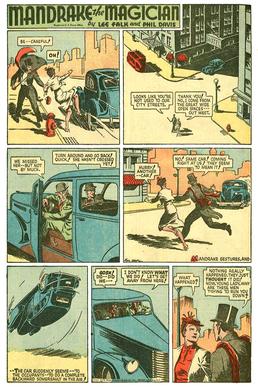
Mandrake the Magician is a syndicated newspaper comic strip, created by Lee Falk before he created The Phantom. Mandrake began publication on June 11, 1934. Phil Davis soon took over as the strip's illustrator, while Falk continued to script. The strip was distributed by King Features Syndicate.
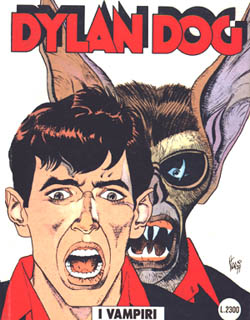
Dylan Dog is an Italian horror comics series created by Tiziano Sclavi and published by Sergio Bonelli Editore since 1986.
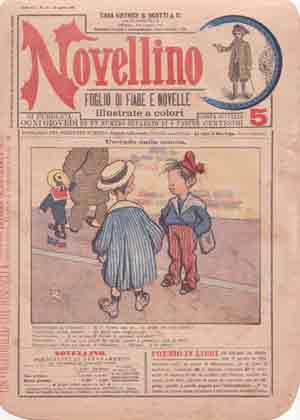
Italian comics, also known as fumetto, plural form fumetti, are comics that originate in Italy. The most popular Italian comics have been translated into many languages. The term fumetto refers to the distinctive word balloons that contain the dialogue in comics.
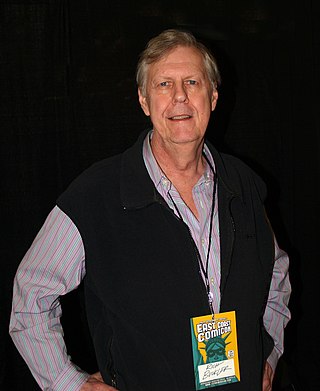
Rich Buckler was an American comics artist and penciller, best known for his work on Marvel Comics' Fantastic Four in the mid-1970s and for creating the character Deathlok in Astonishing Tales #25. Buckler drew virtually every major character at Marvel and DC, often as a cover artist.

Weird West, also known as Weird Western, is a term used for the hybrid genres of fantasy Western, horror Western and science fiction Western. The term originated with DC's Weird Western Tales in 1972, but the idea is older as the genres have been blended since the 1930s, possibly earlier, in B-movie Westerns, comic books, movie serials and pulp magazines. Individually, the hybrid genres combine elements of the Western genre with those of fantasy, horror and science fiction respectively.

Occult detective fiction is a subgenre of detective fiction that combines the tropes of the main genre with those of supernatural, fantasy and/or horror fiction. Unlike the traditional detective who investigates murder and other common crimes, the occult detective is employed in cases involving ghosts, demons, curses, magic, vampires, undead, monsters and other supernatural elements. Some occult detectives are portrayed as being psychic or in possession of other paranormal or magical powers.
Éditions Lug was a French comic book publisher based in Lyon, operating from 1950 to 1989. Originally known for publishing digest-sized reprints of old French and Italian comics, it then created its own characters and titles, such as the Tarzanesque Zembla. Later, Lug began licensing and publishing translated versions of Marvel Comics superhero comics with titles such as Fantask, Marvel, and most notably, Strange.

Lucifera is an anti-heroine of the eponymous 1970s Italian comic book, published between 1971 and 1980 by Ediperiodici. The series, along with more well-known series of the era like Isabella and Goldrake, is among those created by Renzo Barbieri and Giorgio Cavedon, published between the late sixties and early seventies. The series led to the birth and development of the Italian erotic genre.

Demi the Demoness is a fictional, humorous, erotic comics character whose fantasy adventures have been published since 1992. Demi was created by SS Crompton. Demi has appeared in numerous comics crossovers with other characters, including Shaundra, Captain Fortune, Mauvette, Vampirooni, Erika Amerika, Cassiopeia the Witch, Djustine, Crimson Gash, and adult film stars Tracey Adams, Tabitha Stevens, Deja Sin, and Bonnie Michaels.

Rulah, Jungle Goddess is a fictional character, a jungle girl, in comic books published by Fox Feature Syndicate. She first appeared in Zoot Comics #7. Matt Baker designed her, before Jack Kamen and Graham Ingels helped develop her image.
Jason Waltrip and John Waltrip are identical twins who comprise a comic book art and writing team, known for their work on Robotech comics and in webcomics.
Luciano Bernasconi is an Italian comic book artist. In the early 1960s, he worked for fellow artist Carlo Cedroni's Studio Barbato, Éditions Lug in France, and Edizioni Europer in Rome.
Calavera is an Italian adult comic book featuring a female character with razor claws named Francisca Calavera. It was created by Enrico Teodorani, published in Italy by E.F. edizioni, and in the U.S. by Carnal Comics as Calavera: Beautiful, Bloody & Bare.
Notable events of 1967 in comics.
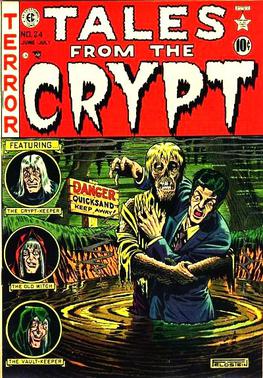
Horror comics are comic books, graphic novels, black-and-white comics magazines, and manga focusing on horror fiction. In the US market, horror comic books reached a peak in the late 1940s through the mid-1950s, when concern over content and the imposition of the self-censorship Comics Code Authority contributed to the demise of many titles and the toning down of others. Black-and-white horror-comics magazines, which did not fall under the Code, flourished from the mid-1960s through the early 1980s from a variety of publishers. Mainstream American color comic books experienced a horror resurgence in the 1970s, following a loosening of the Code. While the genre has had greater and lesser periods of popularity, it occupies a firm niche in comics as of the 2010s.

Western comics is a comics genre usually depicting the American Old West frontier and typically set during the late nineteenth century. The term is generally associated with an American comic books genre published from the late 1940s through the 1950s. Western comics of the period typically featured dramatic scripts about cowboys, gunfighters, lawmen, bounty hunters, outlaws, and Native Americans. Accompanying artwork depicted a rural America populated with such iconic images as guns, cowboy hats, vests, horses, saloons, ranches, and deserts, contemporaneous with the setting.

Archie Horror is an imprint of Archie Comics Publications, Inc. focusing on the company's horror-related titles. Prior to the creation of the imprint the titles were published under the normal Archie Comics banner.














